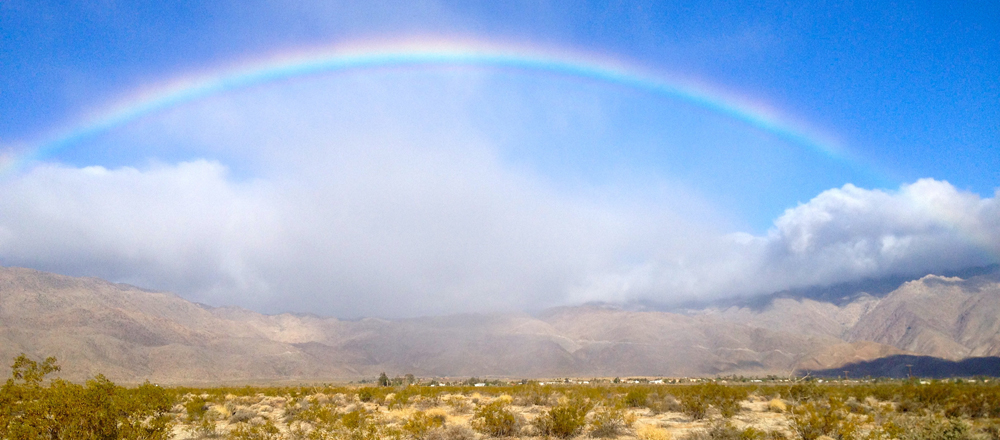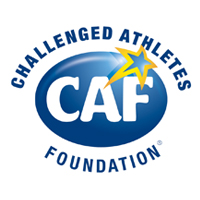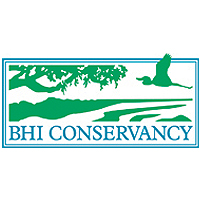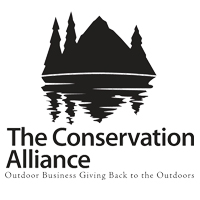2000 finisher
I started the 2000 edition of Badwater as a nervous first-time runner. I trained as best I could, running many hours in multiple layers of clothing in Seattle’s tepid summer climate or pacing in the sauna. I covered as many miles as possible, on terrain similar to that in Death Valley. I compulsively planned for every contingency, surfing the Web and driving my car to buy and to test the right equipment and supplies. I made lists and wrote out directions and annoyed my crew reviewing the details. I adjusted my training and planning after the Memorial Day training clinic in Death Valley. I should have felt confident, but I had never actually run 135 miles in Very High Temperatures (VHTs) and had no way of knowing whether I would be sick or faint or hallucinate or collapse of exhaustion as I had heard that so many had. As it turned out, I didn’t do any of those things. With the help of my crew and the encouragement of Race Director Chris Kostman, Dana Prieto Tanaka and Denise and Ben Jones, as well as Denise Jones’ blister advice, I finished with some new-to-me blisters and a few funny stories in a better-than-anticipated time with my crew still speaking to me.
My crew members were my daughters Lauren and Alexis, Lauren’s friend Alana, and my husband David. We lost two other crew members just before the race. Lauren, Alana and Alexis are all marathoners; David has completed several ultras. My family is experienced in crewing and pacing me at ultras, including Western States and a handful of 24-hour runs. The plan was for them to take turns pacing me. Our major problem was that neither of my daughters has a driver’s license, leaving us with two cars and, with the loss of the two crew members, just two drivers. We had worked out a scheme for shuttling the car forward so that Alana and David could do some pacing while the others crewed me from the van, but we weren’t altogether confident that the scheme would work.
I was also worried about my decision to start at 8:00 am. All the Badwater veterans had requested the 6:00 am start, but I knew from previous experience that no part of my body below the neck believes that it is morning, or breakfast time, at 3:00 or 4:00 am. So I decided to get up at my normal time, hit the buffet at the Furnace Creek Ranch and head out to the start feeling comfortable. I still worried.
The start of the race was like the start of any race: I was nervous before and relieved after. The trip from Badwater to Stovepipe Wells passed uneventfully for me, although unbeknownst to me, my crew was having some problems with the VHTs. For the first part, I had the company of other runners. I enjoyed the scenery. I got a fresh desert hat and Keep-Cool bandana soaked in ice water every couple of miles. That, with insulated bottles of my icy sports drink mix, seemed to help me deal with the VHTs. An ice cream bar at Furnace Creek went down easily. A can of Ensure didn’t feel so good. At supper time, I reached Stovepipe Wells, washed down a turkey sandwich and granola bars with a very cold Mountain Dew and felt fine. I was tired, but happy to have reached that point and looking forward to nightfall. We headed up toward Townes Pass. The sunset, filtered through the smoke from the forest fires, was beautiful.
After about 25 miles, my crew had things organized enough that they could start taking turns pacing me. It was nice to have the company, but the VHTs took their toll on both of my daughters. While Lauren recovered fairly quickly, Alexis continued to feel quite ill. Sometime after dark, Alana had to shuttle her up to the pass where David was trying to sleep in the car, so that Alexis could rest undisturbed while I climbed.
The climb to Townes Pass is one of my favorite memories of the race. Once it was dark, the sky was incredibly star-filled. I have never seen the Milky Way so distinctly. Looking up took my breath away. I looked down once and saw a scorpion scuttling along on the white line at my feet as if he too were in a race. Lauren and Alana took turns pacing, and although I can’t remember what we talked about, in all it was a pleasant night.
I arrived at the Pass to chicken noodle soup, heated on the camp stove we’d worried over before the race, and crackers. Despite pre-taping my feet and compulsive sock and shoe changes, my usual heel blisters were starting up, so I got to recline on the back seat of the van while Lauren and Alana collaborated on applying Second Skin and re-taping my feet. Scott McQueeney came by at this point to say “hi” on his way to a nap. David drove Alexis to Panamint Springs so she could sleep some more, with instructions to Alana to come pick him up as soon as I started running again.
I put on the bigger shoes I’d brought to wear on the downhill and took off. As usual, I ran pretty fast downhill, so the time between crew stops was too short for Alana to drive to Panamint Springs and back to retrieve David for nearly an hour. Lauren was trailing me down the hill and decided to take a break after about 6 miles. Around that point I started to notice that my right big toe was rubbing on my shoe, but I thought that the hill was nearly done and didn’t worry about it. Three miles later, the hill finally ended, but my toe was sore and I was in a foul mood by the time I spotted David heading toward me from the van. I was able to run and walk across Panamint Valley, my toe felt better, and eventually my mood improved.
The break at Panamint Springs was a little hard. It was 3:00 am. Lauren and Alexis were asleep. Other runners were coming in and heading to their rooms or to the hospitality suite while I sat in the van getting cheese and crackers down. I knew I should head out, but kept worrying that I was doing something wrong because no one else was starting up the Panamint Grade. Finally, I put on fresh bigger shoes without looking at my toe, and David and I started the long walk up the next hill with Alana in attendance.
Again, the climb was pleasant. Walking is a break, even uphill, or at least that’s what I tell myself. David and I gabbed the rest of the night away. Gradually the sky lit up again, and we could see the impressive view across the valley behind us and a few runners starting up the grade. I don’t remember going on alone, but at some point David and Alana went back to Panamint Springs to pick up Lauren, Alexis and the car. Alana finally got to sleep for awhile. Lauren took up the pacing duties as we were approaching Father Crowley’s Point.
I have several nice memories of this part of the race. Chris and Dana stopped to say “hi” and to tell me that I was doing well. One of Ruben Cantu’s crew members yelled to me that I was making Seattle-ites proud; I recognized him as Mike Devlin whom I’d met at Western States training camp last year. The encouragement really helped. Nicest of all, a little past Father Crowley’s point I was able to start running the flats and downhills, just as Denise Jones had predicted.
Fortunately I felt good as I pulled over to change back into my desert suit shortly after sunrise, because this time it was the sight of my right big toe that took my breath away. The blister under the toenail was nearly as impressive as the scenery. My crew and I gawked for a few seconds. Then I decided that if I’d been running on it 5 minutes ago, I’d be able to run on it now. I put on my shoe and sock and headed down the road to the Darwin turnoff.
This section of the course went slowly. I was sure that every sign I saw was the second 5000’ elevation sign, only to be disappointed as I got close enough to read the sign. My toe started to bother me, and I told Lauren that I would just have to walk the rest of the way to the Darwin turnoff. She replied that it might be more efficient to fix my toe right away, so that I could run. I had been looking forward to a long walking break, but consented to have the necessary toe surgery. The toe-fix accomplished, I took a few hobbling strides and was able to run comfortably— well, as comfortably as could be expected—again.
The Death Valley National Park boundary went by, and finally we arrived at the Darwin turnoff around 9:30 in the morning. I sat down in the shade of the van to breakfast on a turkey sandwich. I tried David’s jalapeño potato chips, but they were too much even for my cast-iron gut. I had to settle for tortilla chips. I made the mistake of asking the timekeeper about my position in the race; he told me that I was the third woman, 45 minutes behind Lisa Smith. As I ran out of the time station, I was mad at myself: Knowing that I might overtake the woman in front of me meant that I would have to keep running.
I remember the trek through Owens Valley as long and hot and intermittently grouchy. The VHTs were more annoying to me than they had been the day before. It was hazy. The scenery didn’t interest me. There was too much traffic, and the cars were going too fast. I was sure they were going to run over my crew, and following my brother-in-law’s command to his dog, frequently yelled “Over!” to get a crew member off the road. My eyes started to sting before I realized that I had neglected to clean my contact lenses, so I ran without corrective lenses, hoping that I could at least see the approaching cars. Every time that I stood still for more than a few seconds, I could feel my feet swelling in my shoes. I had no intention of quitting, but I wasn’t happy. Luckily I still had little trouble wolfing down the Cheetos and strawberries and cookies, so even my bad mood could be energetic.
Finally, my right toes were rubbing together painfully, but I had no larger shoes. I tried Alexis’ one-size-larger shoes; they were too small. We talked about sending David into Lone Pine to buy some bigger shoes, but I was afraid that whatever size he bought would still be too small. Finally, I suggested that David loan me his “sneakers”, a pair of old running shoes that he’d been wearing to knock around in for maybe 10 years. I think my crew was trying to humor me, but they helped me lace up David’s size 11 shoes. I couldn’t run very well in my “clown” shoes, but they felt so good that, for a short while at least, my pacers and I shuffled along singing camp songs and commercial jingles.
Unfortunately, I still had a long way to go through Owens Valley. The newly spread asphalt was still hot, but at least broke the monotony. I was relieved that the work crew had gone home so that my crew would be able to stop for me along the 4-mile stretch of road construction. After awhile I could see where the road turned to head into Lone Pine, but we never seemed to get any closer. A few faster runners who had stopped to take breaks passed me. Keeler seemed a much more extensive town on foot than it had by car. I became convinced that I would not be able to break 48 hours. Fortunately Alexis was feeling better and back on duty. She finally made me understand that I must have read my watch wrong. Even so, it became more and more difficult to keep telling myself “All you have to do is get to Lone Pine.” Mt. Whitney loomed, and I was having trouble not worrying about it.
Rapid mood changes were the theme through Owens Valley and past Lone Pine. We finally reached the “traffic light in Lone Pine” just before 8 pm. I passed Lisa Smith, and although I knew that she was really 2 hours behind me at this point, passing her made me feel more confident. David was pacing me. Somehow we had missed the rest of my crew and the hamburger they had promised when we came through Lone Pine. David headed back to find them, and 30 seconds later my spirits started to flag. My pace slowed to a crawl. Lisa and Jay Batchen and their pacers passed me back. David couldn’t figure out what was going on when he returned a few minutes later with the rest of my crew and the grub. As I sat on a rock munching my hamburger, I just lost it. It was all I could do to get moving again, but not long after I did, everything started feeling ok again.
It grew dark as Alana paced me up the Whitney Portals Road. Alana is new to our family, so we had plenty to talk about. The time passed quickly, but the miles did not. I knew that all I had to do was to keep moving, but the distance to the finish line never seemed to get any shorter. I’ve never felt so tired. Every so often I would feel my head and shoulders droop, and I would stop talking. I believed that I was quiet for long periods of time; Alana told me later that I hardly ever stopped talking for more than a few minutes.
For most of the race, I had felt fairly isolated. Once past Panamint Springs, we had only occasional contact with other runners or crews. On the Whitney Portals Road, it seemed that we caught up with a crowd. I passed or was passed by several runners. Crew vehicles were everywhere. Chris and Dana reappeared to say “hi”, and Chris walked with me a bit. I told him about David’s shoes as if he wouldn’t have noticed what I was wearing. Shortly after David took over as my pacer, Maria Biel, a journalist writing a story for Playboy Germany, recognized me from an earlier meeting at home in Seattle. She walked with me for perhaps a mile, asking questions, and to be sociable, I answered. That mile went by quickly.
The “crowds” seemed to thin out in the last couple of miles. David and I chatted as we walked. We still had a minor crisis and a half to face before the finish. In one half-mile stretch the batteries in both of our flashlights and our backup flashlight went dead. David had the presence of mind to turn his dead flashlight off, so when the backup died we continued on the weakly rejuvenated batteries. Finally we found ourselves completely in the dark with no idea of how far we were from the van. I couldn’t believe how dark it was. We took a few slow steps before we saw van lights flash just ahead, and with what seemed like incredible luck we were saved. I stopped at the van to get a rock out of my (i.e., David’s) shoe. There was no rock, just a wrinkle in the shredded insole and a blister on the ball of my foot. David traded me his left running shoe for his left sneaker. The blister still hurt, but it was the last half-crisis. The end was in sight.
The rest of my crew joined us at the parking lot just before the finish line. The five of us crossed the line together. After a bit there was an awards mini-ceremony at which Chris awarded Art Webb and me our finisher’s medals. I was pleasantly surprised at my time, 41:14:57.
People took pictures. Someone took a picture of me with my crew. In it, David and Alana look half-asleep. Lauren is trying to keep warm by wrapping a towel around her shoulders. Alexis actually looks sort of photogenic in serious runner’s clothes. My hair is matted down. I’m wearing my Sun Precautions long-sleeved shirt with race number still in place and long pants. Around my ankles are reflective strips, nicely setting off two different men’s size 11 running shoes. Everyone is smiling.









